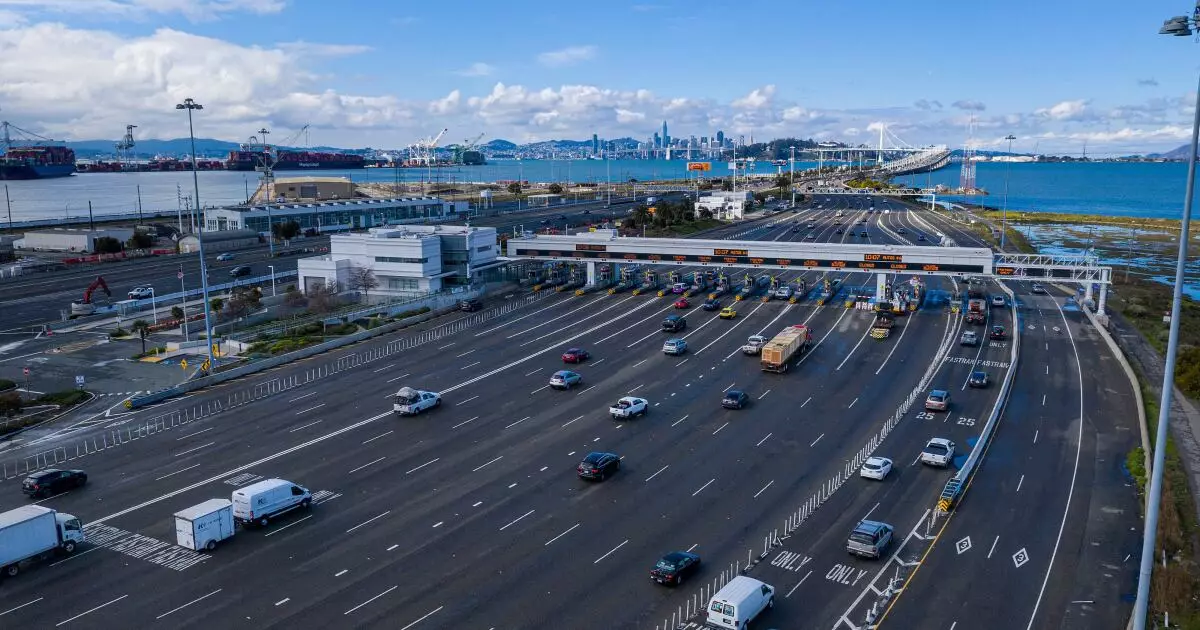In an era marked by rapid advancements in automotive technology and an ever-evolving landscape of transportation needs, the traditional gas tax is finding itself more obsolete than ever. As states scramble to find alternative funding sources for transportation infrastructure, it becomes evident that a paradigm shift is occurring. With roughly two-thirds of states in America proposing transportation funding bills just this year, it’s becoming clear that the conversation around infrastructure financing is no longer about maintaining the status quo—it’s about adapting to a new economic reality that includes electric vehicles and changing consumer behaviors.
The notion that gas taxes can sustain a state’s infrastructure has been rendered naive at best. Electric and fuel-efficient cars are on the rise, adversely impacting gas tax revenues. States are now faced with the pressing need to explore new avenues for funding, as witnessed by the staggering 130 transportation bills introduced across 37 states in the first quarter alone. This desperate race for revenue is creating a chaotic environment where innovation cannot afford to linger in the halls of bureaucracy.
A New Wave of Fees and Taxes: Can It Work?
A notable observation from this surge of legislative activity is the growing reliance on user fees and taxes as states attempt to close the financial gap. Approximately 25% of newly proposed bills aim to establish recurring revenue sources. With so many states leaning into the idea of tolling, as seen in the controversial measure passed in Indiana, one has to wonder if this is a viable long-term strategy or merely a stopgap solution.
In Indiana, the passage of House Bill 1461 reflects a shift in political philosophy, suggesting that citizens should “pay for what they use.” While this reformist sentiment aligns with center-right ideology—promoting the concept that users should directly fund services they consume—it raises the question of equity. Tolling could disproportionately affect lower-income drivers who may not have a choice in their commuting methods. Introducing such fees without considering broader implications may lead to public backlash, a trap that previous administrations have fallen into.
The Electric Vehicle Dilemma: Who Pays the Price?
The exponential rise of electric vehicles represents an outstanding challenge for states struggling to finance their transportation infrastructure. With electric cars contributing little to the Highway Trust Fund, states are contemplating the introduction of fees specifically targeting EV owners. While sensible from a funding perspective, it could inadvertently hinder the adoption of cleaner technologies, which contradicts the larger environmental goals set forth by both political parties.
The Fair Share Act proposed by Republicans illustrates the grave predicament lawmakers are grappling with; they’re caught between fiscal necessity and environmental responsibility. An additional tax on EVs might deter prospective buyers as they navigate the delicate balance of affordability and sustainability. With looming congressional discussions on a national EV fee, states must tread carefully lest they alienate a growing segment of environmentally conscious consumers who yearn for innovative solutions rather than merely punitive measures.
Innovative Financing: Bonds and Future Revenue Streams
In a bid to secure immediate and future revenue, numerous states are experimenting with innovative financing methods. From allowing local governments to issue revenue bonds in North Carolina to Virginia’s new law enabling the issuance of up to $1 billion in revenue bonds, these approaches demonstrate an entrepreneurial spirit focused on unlocking state and local potential.
However, while these new funding mechanisms aim to address urgent infrastructure needs, they also risk placing state budgets into precarious entanglements. Leveraging future revenue through bonds could lead to unsustainable fiscal practices, leaving future administrations with the burden of debt repayment. This cycle of knee-jerk financial responses deviates from investing in long-term solutions and strategies that will outlast fleeting political trends or economic fluctuations.
State-by-State Variability: A Patchwork Quagmire
The disparity in how states approach the transportation funding crises reflects the unique political climates and governance philosophies across America. For instance, Maryland’s legislature passed a bill aimed at generating $500 million in transportation revenue, showcasing a proactive stance compared to Indiana’s more reactive tolling measures. This patchwork quilt of state policies creates a complex environment that lacks uniformity, risking disparities in infrastructure quality and access across the nation.
As each state explores its revenue strategies, the risk of inconsistencies becomes evident. Some areas may enjoy luxurious highways and state-of-the-art public transportation systems, while others scramble to keep their roads intact. This inequitable distribution of resources is a likely breeding ground for social tensions, highlighting the critical need for a cohesive national approach that balances local ingenuity with overarching federal regulations.
As the debate surrounding transportation funding strategies progresses, the core question remains: Are these measures sustainable, or are they simply retribution disguised as reform? The answers may not only redefine our roads but may also shift the very foundation of how America perceives and funds its infrastructure going forward.

